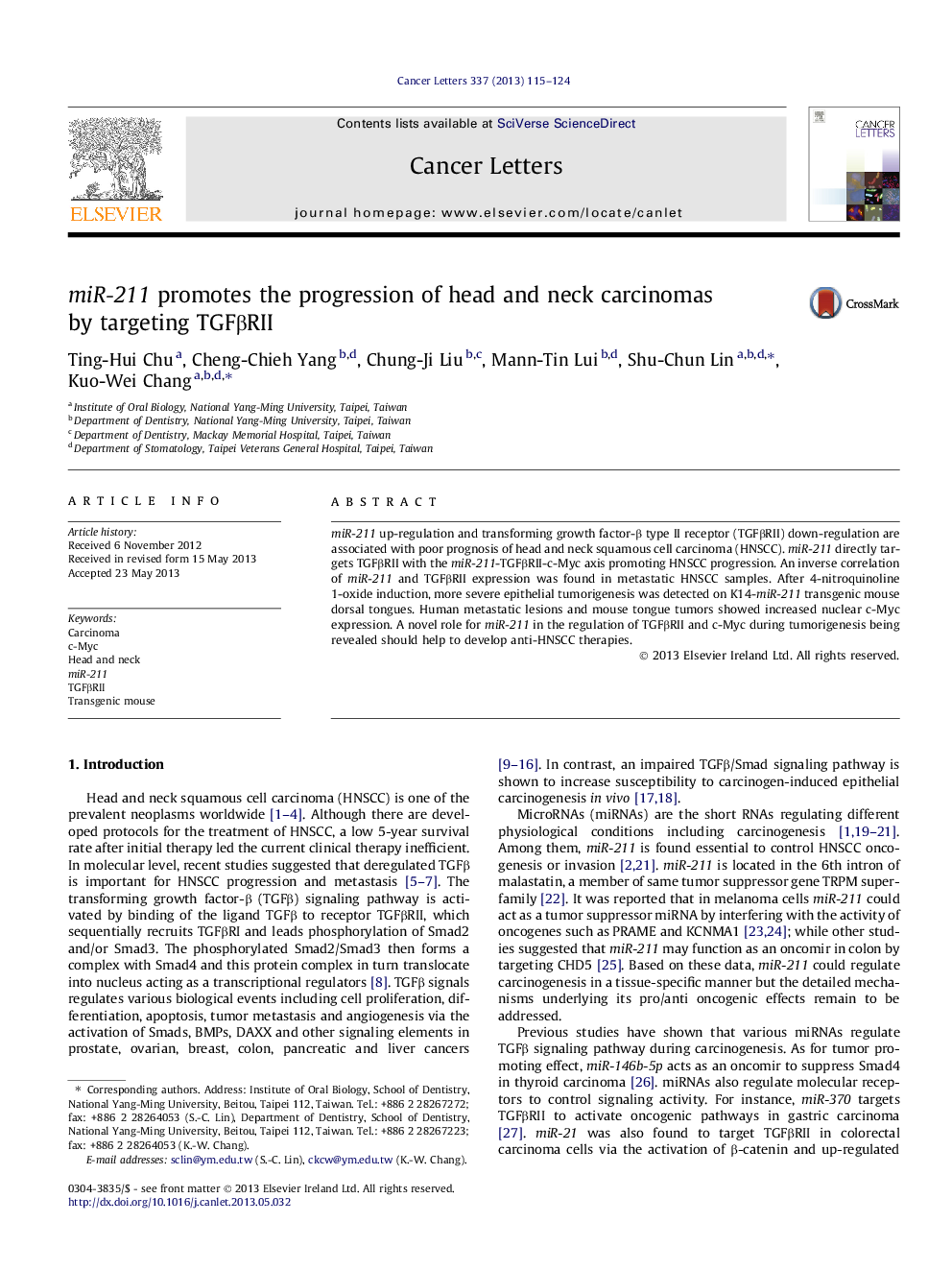| Article ID | Journal | Published Year | Pages | File Type |
|---|---|---|---|---|
| 2112933 | Cancer Letters | 2013 | 10 Pages |
•miR-211 targets TGFβRII, impairs TGFβ-Smad3 cascade, and enhances c-Myc expression.•TGFβRII expression is reversed to miR-211 expression in human metastatic HNSCC.•More severe lingual tumorigenesis is present in 4NQO treated K14-miR-211-Tg mice.•miR-211 promotes HNSCC pathogenesis by disrupting TGFβ signaling cascade.
miR-211 up-regulation and transforming growth factor-β type II receptor (TGFβRII) down-regulation are associated with poor prognosis of head and neck squamous cell carcinoma (HNSCC). miR-211 directly targets TGFβRII with the miR-211-TGFβRII-c-Myc axis promoting HNSCC progression. An inverse correlation of miR-211 and TGFβRII expression was found in metastatic HNSCC samples. After 4-nitroquinoline 1-oxide induction, more severe epithelial tumorigenesis was detected on K14-miR-211 transgenic mouse dorsal tongues. Human metastatic lesions and mouse tongue tumors showed increased nuclear c-Myc expression. A novel role for miR-211 in the regulation of TGFβRII and c-Myc during tumorigenesis being revealed should help to develop anti-HNSCC therapies.
